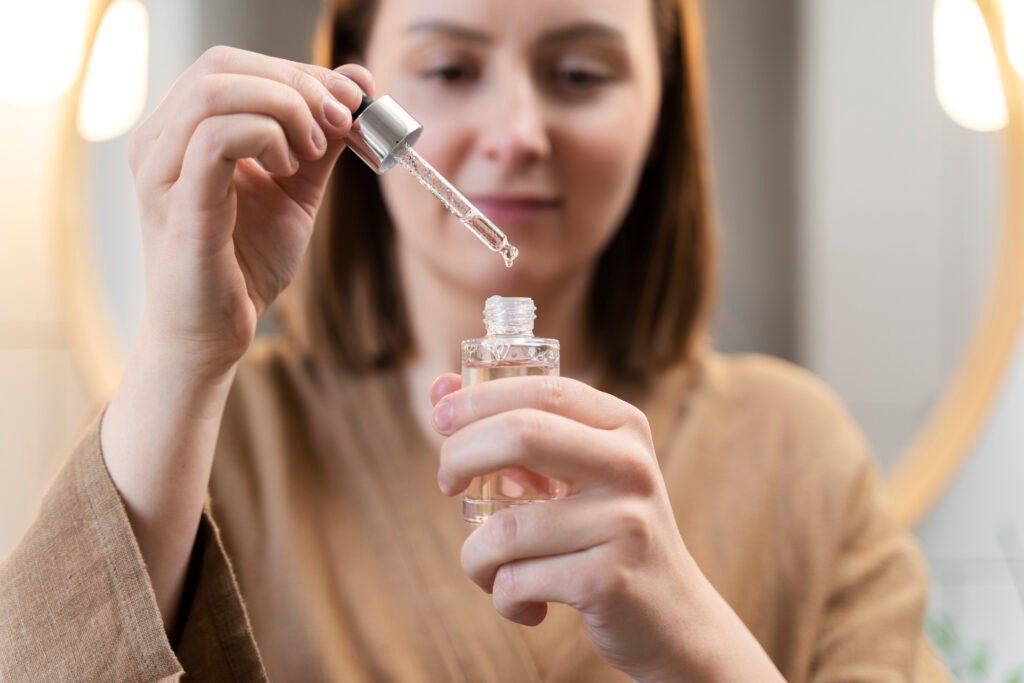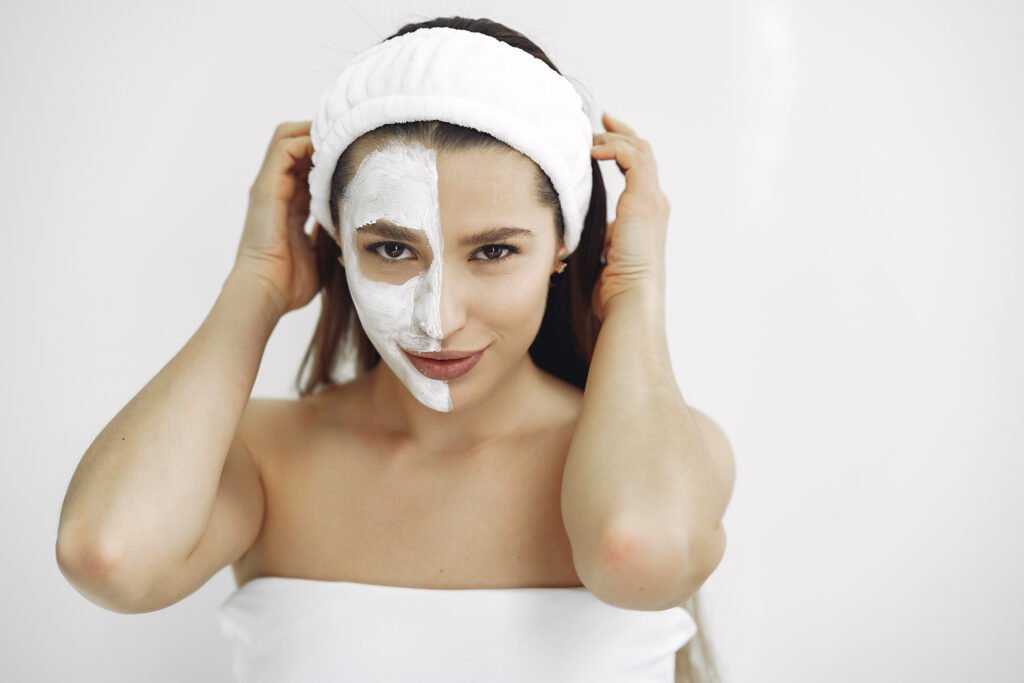How to Use Hyaluronic Acid: Complete Skincare Guide 2025

Among the beneficial substances naturally found in our skin, one is hyaluronic acid, which works like a magnet to retain moisture in any skin. Hyaluronic acid can hold more than 1,000 times its weight in water. And for this powerful hydration ability, it is one of the most popular ingredients in today’s skincare.
Hyaluronic acid is mainly widely used in the form of serums, moisturizers, and masks. By using hyaluronic acid, you can make the skin plump, smooth out fine lines, and maintain a healthy, dewy glow of the skin. It is light, non-sticky, and suitable for all skin types including oily and sensitive skin. However, even though hyaluronic acid is highly effective, the most important thing is to use it in the correct way. How to use hyaluronic acid properly? I will explain it simply in this article. For example – if you apply hyaluronic acid on slightly damp skin and seal it with a moisturizer, you will get the maximum hydrating benefits without the risk of dryness or irritation.
What is Hyaluronic Acid?
Hyaluronic acid is a substance naturally found in our skin that plays an important role in keeping the skin hydrated, smooth, and healthy. It is also found throughout the body, but half of the total hyaluronic acid in our body is found in the skin. Hyaluronic acid works like a sponge in our body. Just as a sponge absorbs water from outside and stores it inside, and releases that water when squeezed, in the same way, hyaluronic acid pulls and holds a large amount of water (moisture) in our skin.
But the problem is, as your age increases, the level of naturally produced hyaluronic acid in the skin decreases. And when the level of hyaluronic acid decreases, water loss starts in your skin and different signs of aging begin to appear. Such as fine lines caused by aging.
However, along with our body, many skincare products also contain hyaluronic acid. And through these products, you can fill the deficiency of your natural hyaluronic acid. Generally, the forms of hyaluronic acid include lightweight serums for daily hydration, creams and moisturizers for locking in moisture, masks for intense boosting, and even products like injections to reduce wrinkles and restore skin volume.
Benefits of Hyaluronic Acid for the Skin
Currently, in modern skincare, hyaluronic acid is one of the most effective and versatile ingredients. Its ability to attract and retain water (moisture) makes it a game-changer for maintaining healthy, radiant skin. Beyond retaining moisture, here are some other important benefits of hyaluronic acid:
1. Deep Hydration
Hyaluronic acid is a powerful humectant that attracts and holds moisture in the skin. It traps water molecules both inside and on the surface of the skin, keeping it hydrated throughout the day. It does not create any greasiness, and without being oily, it helps the skin stay soft, plump, and refreshed.
2. Improves Skin Texture
Continuous use of hyaluronic acid helps refine the skin’s surface. By providing deep hydration, it smooths roughness and blemishes, evens out the skin tone, and enhances the skin’s natural, healthy glow.
3. Reduces Fine Lines and Wrinkles
When the skin is well-hydrated, it looks smooth and more youthful. Hyaluronic acid fills the skin with moisture, which mainly reduces fine lines and softens wrinkles. Over time, hyaluronic acid supports the skin’s elasticity and firmness, making it a key ingredient in anti-aging skincare.
4. Safe for Sensitive and Acne-Prone Skin
Unlike harsh active ingredients, hyaluronic acid works gently, lightly, and is non-comedogenic, meaning it does not clog pores. This property makes hyaluronic acid suitable for all skin types, including sensitive, oily, and acne-prone skin, without the risk of irritation.
How to Use Hyaluronic Acid in Your Skincare Routine

Although hyaluronic acid has many benefits, when you use hyaluronic acid correctly, you will get the maximum hydration and anti-aging benefits for your skin. Here is how you can effectively include hyaluronic acid in your daily routine:
1. Cleanse your skin first
Always start your skincare routine with clean skin. For this, use a gentle cleanser to remove dirt, oil, and impurities, allowing hyaluronic acid to absorb more effectively into your skin. If you apply hyaluronic acid on unclean skin, its ability to penetrate deeply and deliver hydration where it is needed most decreases.
2. Apply on damp skin
For best results, apply hyaluronic acid on slightly damp skin, not completely dry skin. This is because hyaluronic acid works by pulling in water. When applied to moist skin, it locks in that moisture, boosts hydration, and makes your skin plump and dewy.
3. Layer with other products
Hyaluronic acid can blend well with many other skincare ingredients. For antioxidant protection, you can apply it with serums like Vitamin C. After applying hyaluronic acid, you should use a moisturizer to seal in hydration and prevent water loss. This layering method ensures your skin stays nourished and moisture-balanced throughout the day.
4. Morning vs. night use
Many people wonder whether to use hyaluronic acid during the day or at night. But you can use hyaluronic acid both day and night. In the morning, apply hyaluronic acid before moisturizer and always use sunscreen to protect your skin. At night, hyaluronic acid works to repair and hydrate your skin while you sleep, helping you wake up with refreshed, glowing skin.
If you want to know “What is Skinimalism? Skinimalism Beauty Trend” then read in detail.
How Often Should You Use Hyaluronic Acid?
Apart from all the benefits of hyaluronic acid you have heard so far, there is another advantage, and that is its gentle and versatile nature, which makes it suitable for your daily use. Unlike other products that may irritate the skin due to strong active ingredients, hyaluronic acid draws water and hydrates your skin. Therefore, it can be safely included in your everyday skincare routine without any side effects.
Generally, most people use hyaluronic acid twice a day. By using it in the morning and evening, you can enjoy the full benefits of hyaluronic acid. When applied in the morning, hyaluronic acid provides enough hydration and nourishment to keep your skin plump, smooth, and refreshed throughout the day. On the other hand, at night, hyaluronic acid ensures deep hydration and repair for your skin, helping you wake up with revitalized and glowing skin in the morning. Just remember to always use a moisturizer to lock in the hydration.
Although hyaluronic acid is suitable for all skin types, for very sensitive skin it is better to start gradually. At first, you can apply hyaluronic acid once a day to begin your routine. Then, as your skin adjusts to hyaluronic acid, you can gradually increase the frequency. This method helps prevent any potential irritation and ensures that your skin receives the full benefits of continuous hydration from hyaluronic acid.
Which Ingredients Can You Use with Hyaluronic Acid?
Hyaluronic acid is one of the simple ingredients that can make any skincare routine a versatile addition. It not only provides deep hydration but also enhances the effectiveness of other active ingredients. Here is a guide to which ingredients you can safely use with hyaluronic acid:
Vitamin C → Brightening + Hydration
For glowing skin, Vitamin C → Brightening + Hyaluronic Acid will act as a powerhouse for you. While Vitamin C helps brighten the skin, even out the skin tone, and protect against environmental free radicals, hyaluronic acid provides hydration to reduce dryness and irritation.
Niacinamide → Barrier Repair
Using niacinamide together with hyaluronic acid strengthens the skin’s natural barrier. Niacinamide calms redness, refines skin texture, and controls excess oil. Meanwhile, hyaluronic acid locks in moisture for a balanced, healthy complexion.
Peptides → Anti-Aging
Peptides help boost collagen and improve firmness in your skin. On the other hand, hyaluronic acid plumps the skin and smooths fine lines. Together, this combination helps your skin become youthful and resilient over time.
What to Avoid
Although hyaluronic acid is generally safe with most actives, it is better to avoid using it at the same time as strong exfoliants like glycolic acid and salicylic acid. Using them together may interfere with hydration. For best results, use these ingredients in different steps or in an alternative routine.
Common Mistakes to Avoid When Using Hyaluronic Acid
Although hyaluronic acid is a very gentle and effective ingredient, if you use it incorrectly, you may not get its beneficial properties. It can even cause short-term problems for your skin. So to avoid these mistakes, here I have highlighted some common ones:
1. Applying on dry skin
Hyaluronic acid mainly works by attracting water to the skin. But if applied on completely dry skin, instead of hydrating from the surface, it may draw moisture from the deeper layers of your skin. As a result, your skin may feel tight or dehydrated. So for the best hydration, always apply it on slightly damp skin.
2. Skipping moisturizer afterward
Even though hyaluronic acid hydrates the skin, it cannot hold moisture by itself. Skipping moisturizer afterward may cause water to evaporate from your skin even after proper hydration. This limits the effectiveness of hyaluronic acid. So to seal in hydration and maintain plump, soft skin, always use a moisturizer after applying hyaluronic acid.
3. Using too many active ingredients together
Using multiple strong active ingredients such as exfoliants, retinoids, or acids at the same time with hyaluronic acid is a major mistake. These ingredients together may irritate your skin or reduce its hydrating benefits. To avoid this problem, combine hyaluronic acid with gentle active ingredients or use strong ones in a separate routine.
Who Should Use Hyaluronic Acid?
Among all the versatile ingredients for skin care, one of the most beneficial is hyaluronic acid. Hyaluronic acid is suitable for all skin types. Whether your skin is oily, dry, sensitive, or combination, hyaluronic acid can seamlessly fit into your routine without causing irritation or clogging pores.
Although everyone can use it, hyaluronic acid is especially beneficial for dry, dehydrated, or mature skin. For dry and dehydrated skin, it restores strong moisture, softness, and comfort. And for mature skin, its plumping effect helps reduce the appearance of fine lines and wrinkles.
FAQs About Hyaluronic Acid
1. Can I use hyaluronic acid every day?
Yes, hyaluronic acid is gentle enough for daily use and can even be applied twice a day – morning and night. Its lightweight and non-irritating formula makes it safe for long-term use without putting stress on the skin.
2. Can I use hyaluronic acid with retinol?
Absolutely! Hyaluronic acid pairs beautifully with retinol. Retinol can sometimes cause dryness or irritation, which hyaluronic acid helps counteract by keeping the skin deeply hydrated. For best results, apply hyaluronic acid first to lock in hydration, then follow with retinol.
3. Is it safe for acne-prone skin?
Yes, hyaluronic acid is non-comedogenic, meaning it will not clog pores. Instead, it can help soothe and hydrate acne-prone skin. Keep in mind that when the skin is properly hydrated, it supports healing and reduces the risk of irritation.
